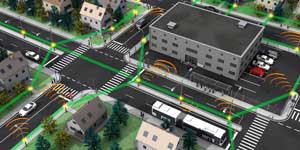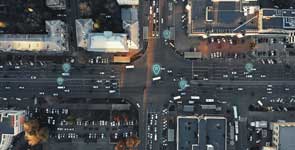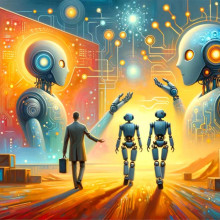Recurrent neural networks enable AI in an early warning system
- Details
- Hits: 5788
During the TUM researchers have a new one early warning system for autonomous vehicles developed that with Artificial intelligence (AI) based recurrent neural networks learns from thousands of real traffic situations. With more than 85 percent accuracy in today's self-driving development vehicles, the system can warn of a potentially critical situation as early as 7 seconds. Even today, self-driving cars cannot master this on their own. TUM carried out the study together with the BMW Group.

Content of the research report
- New approach to artificial intelligence
- Recurrent neural networks for pattern recognition
- Warning up to 7 s in advance and data collection
- What are recurrent neural networks?
New approach to artificial intelligence
That way self-driving cars Many developers rely on sophisticated models with which the cars can assess the behavior of all participants in road traffic. However, there are complex, unforeseen situations in which such models are currently still inadequate.
 6G network | Bidirectional radio link and Thz receiver
6G network | Bidirectional radio link and Thz receiver
A team from Technical University of Munich (TUM) led by Prof. Eckehard Steinbach, holder of the chair for media technology and member of the board of directors of the Munich School of Robotics and Machine Intelligence (MSRM) at TUM. Artificial intelligence enables your system to learn from previous situations in which autonomous test vehicles reached their system limits in real traffic. In such situations, people take control of the vehicle again because they have decided to do so for safety reasons or the car has asked them to intervene.
Recurrent neural networks for pattern recognition
The new technology captures over Cameras and Sensors the environment and records the vehicle and environmental condition. This could be the position of the steering wheel, the condition of the road, the weather or speed and visibility. The AI, based on recurrent neural networks (RNN), learns to recognize patterns from this data. If the technology recognizes a pattern in a new driving situation, which in the past has already overwhelmed the automated control under these circumstances, it warns the driver early on of the potentially critical situation thanks to the AI.
 Self-driving cars from the perspective of an automotive supplier
Self-driving cars from the perspective of an automotive supplier
“In order to make vehicles more autonomous, many of the previous methods are examining what cars have understood about traffic so far and then improving the models that the cars are based on. The big advantage of our technology is that we completely ignore the opinion of the car and instead look purely at the data of what is actually happening and find patterns, "says Professor Steinbach. “In this way, the AI also discovers potentially critical situations that may not or have not yet been recognized in models. Our system thus offers a safety function that knows when and where the cars are weak. "
Warning up to 7 s in advance and data collection
The researchers got the technology along with BMW and their automated development vehicles were tested on public roads. Around 2500 situations in which the drivers had to intervene were evaluated. The study found an 85% accurate prediction of potentially critical situations up to 7 s before they occurred.
 Self-driving cars with Continental | Nvidia supercomputer
Self-driving cars with Continental | Nvidia supercomputer
A large amount of data is required for the technology to work. Because AI can only then recognize and predict experiences with the system boundary that have already been made. In view of the large number of development vehicles, data would be generated almost by itself. Study author Christopher Kuhn says: "Every time a potentially critical situation arises during test drives, we lose a new training example." The central storage of the data makes it possible for every vehicle to learn from the records of the entire fleet.
General technical knowledge
What are recurrent neural networks?
Recurrent neural networks (RNN) are neural networks in which neurons of the same layer or neurons of different layers provide feedback. RNNs are more similar to the neuron circuitry of the human brain than the feedforwad networks. Thanks to the feedback, time-coded information can be obtained in the data. Examples of recurrent neural networks are the Jordan network, the Elman network, the Hopfield network and the completely interconnected neural network.
You might also be interested in...

